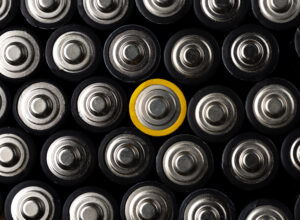Silver offers several important properties: the highest thermal and light conductivity, the lowest melting point and weight, and its ability to reflect light. It’s also very versatile and easy to fabricate into components, while it also can be easily alloyed with other metals like tin and aluminum. Silver electroplating solutions are highly adaptable, with options that include silver-plating of gold, copper, stainless steel, or other alloys often used in batteries.
Understanding Silver Electroplating Solutions
Electroplating silver involves binding a metal layer over another metal’s surface. The process changes the surface properties of the metal into which it’s integrated, which can then protect the underlying metal, improve its aesthetics, or both. Whether functional, decorative, or both, the process requires submerging both metals into an electrolyte solution. The electrolytes are exposed to positive and negative charges using a power source.
The power source connecting to the plating metal includes an anode that supplies a positive charge and a cathode that supplies a negative charge. When the power source is turned on, a direct current oxidizes the metal or alloy, dissolving it via silver electroplating. Solutions containing electrolytes will sometimes incorporate elements from within the mixture into the plating, though other times, the process involves plating the silver directly onto the item.
Some examples of silver electroplating solutions in the industry include:
- Aerospace: Applied to bearing surfaces, electronic connectors, engine parts, helicopter gearing, turbine fasteners, and other aircraft components.
- Defense: Employed in components for armored personnel carriers, battle tanks, and military aircraft.
- Electronics: Used in bearings, connectors for critical and non-critical loads, electrical contacts, switches, and other components.
- Healthcare: Applied to arthroscopic tools, endoscopic implements, glucose monitors, insulin pumps, medical lasers, MRI machines, and other medical equipment.
- IT industry: Used for semiconductors, small terminal connects, and computer lead frames.
- Power generation: Employed in solar arrays and battery contacts, along with connectors utilized in energy-generating applications
- Telecommunications industry: Utilized for managing radio frequencies in amplifiers, coils, and other telecommunications equipment.
As silver is considered the best conductor of electricity and the element solders exceedingly well, a wide array of industries utilizes the process of silver electroplating. Solutions that require the efficient flow of electrical current often benefit from this ability to conduct electricity, as its electrical conductivity doesn’t diminish much, even when tarnished.
Silver Electroplating for Batteries
Researchers in the United States and China have partnered in the past few years to develop electroplating techniques for making cathodes for lithium-ion batteries. These include silver electroplating solutions already being used to improve the quality and performance of high-end and complex electronic batteries. Due to its high corrosion resistance and conductivity, silver is utilized in electric vehicle (EV) batteries over other materials. Most EV models contain 25 to 50 grams of silver, while hybrid vehicles use 18 to 34 grams.
The use of silver electroplating solutions enables EV batteries to perform significantly better. Many of the materials within an EV battery – like the glue that keeps it bound together – don’t contribute to the electricity powering the vehicle, so it makes sense to include a highly conductive material like silver. Electroplating solutions being explored include electroplated lithium onto foil without the need for glue at all. Such innovations allow the electroplated cathodes to produce 30 percent more energy than conventional materials used in electrode slurries for lithium-ion batteries.
Electrode slurry materials:
- Act as active materials that react to lithium ions.
- Contain additives like silver that serve to assist with electrical conductivity.
- Bind active materials with the conductive additives.
Yet silver electroplating generally results in solutions that result in purer cathode materials that contribute to lowering costs and improving quality. This reduces the need for more expensive conductive materials without affecting a battery’s performance. Higher capacity batteries require that active materials make up a higher proportion of the materials involved, reducing the ratio of conductive additives like silver. Electroplating solutions thus provide EV batteries with greater efficiency while making them more stable, enabling current to pass through them directly. There’s a tradeoff between optimizing the ratio between the active material and the conductive additives, as there must be sufficient conductivity to lower the resistance within the battery.
Silver Electroplating Solutions for Batteries
With over a half-century of experience providing the highest quality finishes for leading manufacturers in diverse sectors, including aerospace, defense, and energy, Silvex Inc. has the expertise to provide each customer with the best silver electroplating solution for their applications. To learn more about how we can assist with your electroplating and other plating needs, contact the experts at Silvex today.

